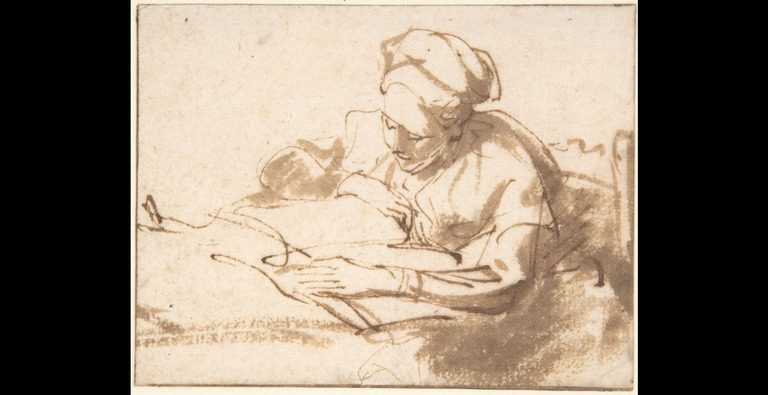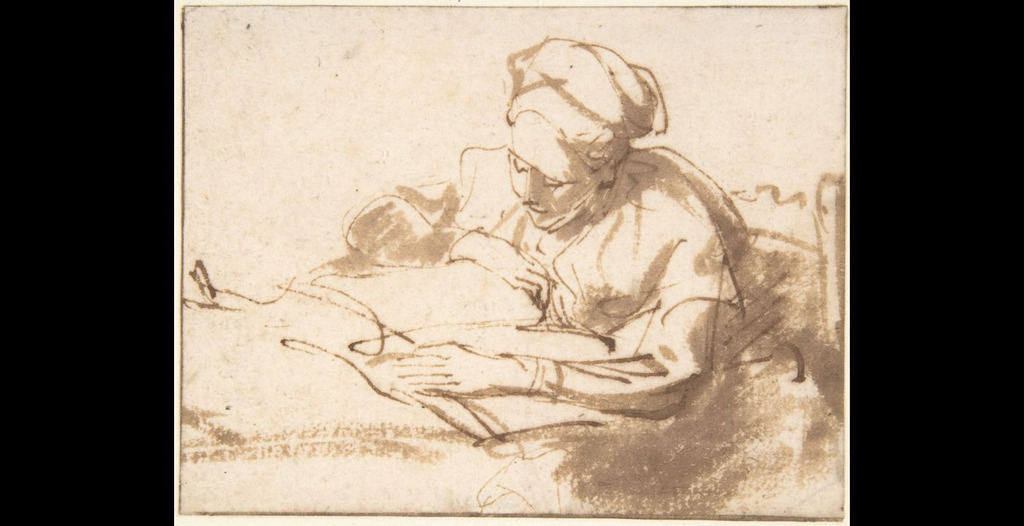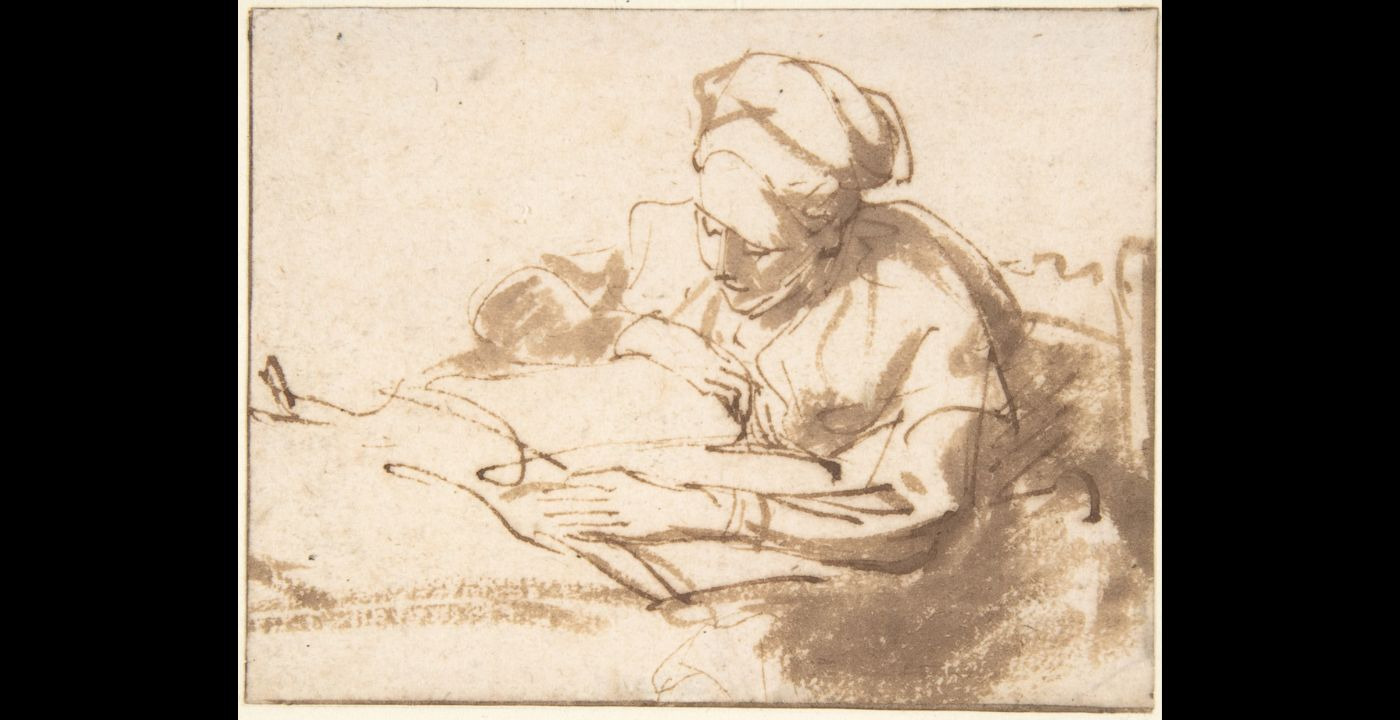Birth
Date and place is unknown, but most likely in London.
Education
UnknownDeath
October 2nd, 1792 in London, UKReligion
French Huguenot, ProtestantMaria De Fleury belongs to a group of Dissenting women who made significant contributions in poetry and prose in the last half of the eighteenth century and early decades of the nineteenth century. Though relatively unknown today, between 1780 and 1792 she was the most widely recognized female writer among London’s Calvinistic Dissenters. Her writings chronicle her allegiance to Calvinism and a liberal Whig political agenda that left her a pronounced advocate of Lord Gordon and the Protestant Association in 1780-81 and of the French Revolution in 1790. Her pamphlet war with William Huntington was unprecedented for any woman writer of the eighteenth century, a controversy driven by personal and political differences, religion, and gender. In each instance, she demonstrated her right as a woman to speak publicly on the controversial issues of her day, collaborating and at other times controverting with ministers as equals in the marketplace of London's Dissenting print culture in the late eighteenth century.
Personal Information
Name(s)
Maria de Fleury
Date and place of birth
Date and place is unknown, but most likely in London, between 2 October 1752 and 1 October 1753.
Date and place of death
London, 2 October 1792, in her 40th year, according to the burial record at Bunhill Fields, the Dissenting Burial Ground.
Family
Nothing is known of de Fleury’s parents. They were most likely French Huguenots, though it appears de Fleury was born in England.
Mother: unknown
Father: J. de Fleury (dates unknown) The British Library’s copy of her first publication, Poems Occasioned by the Confinement and Acquittal of the Right Honourable Lord George Gordon, is signed by “J. De Fleury, Senr,” most likely her father.
Siblings: The only known sibling is her brother, J. de Fleury, Jr. He was an artist of some note, contributing several engravings to the Protestant Magazine at the same time that Maria was publishing her early poems in the same magazine. She composed a poem in honor of his marriage, “To Mr. and Mrs. De Fleury, Jun’rs, Married November 25th, 1773,” which she later published in Divine Poems and Essays (pp. 279-80). He became a popular landscape and topographical painter, exhibiting at the Royal Academy between 1799 and 1823. His son, J. [James] Vivien de Fleury, followed in his father’s footsteps, exhibiting in London, 1847-68. His daughter, J. [Jane] Vivien de Fleury, exhibited scenes from Venice in her London studios between 1869 and 1880, when she and her father removed to Birmingham, both continuing to appear in exhibitions there until 1893 and painting into the early years of the new century, ending an important artistic dynasty whose connections with Maria de Fleury have been heretofore undetected.
Marriage and Family Life
Like her contemporary and fellow Dissenter Mary Hays, Maria de Fleury never married, living in London during her publishing career either as an independent woman or with another woman. Her title pages reveal two addresses: 2 City Mews, White-Cross Street, and 31 Jewin Street. She sold her writings from both addresses.
Education
Her education history is unknown, but her writings exhibit a high level of education that embraced both literature and theology.
Religion
Most likely she was raised a French Huguenot but by the early 1780s she was worshiping primarily among the Particular Baptists as indicated by her Hymns for Believer’s Baptism (1786). She also moved easily among the Independents, earning the admiration of Baptists, Independents, and many Evangelical Anglicans and followers of the Countess of Huntingdon for her defense of Calvinism against the antinomianism of William Huntington. She was also a rabid anti-Catholic and supporter in the early 1780s of Lord Gordon and the Protestant Association..
Transformation(s)
De Fleury never wavered from her devotion to evangelical Calvinistic Dissent and its doctrine of the “priesthood of all believers,” which allowed her to engage in matters of spiritual truth and religious doctrine with ministers, both privately and in print. Her defense of Lord Gordon and battles with Charles Wesley and William Huntington may not have been transformations in her own life but they do represent a transformation in Dissenting women’s discourse as de Fleury extended the boundaries of political and religious commentary by women from the more common form of scribal private expressions in diaries and letters to a more radical formal public discourse in print.
Contemporaneous Network(s)
Aside from her connections with the various Baptist, Independent, and Evangelical ministers in the 1780s and ’90s, de Fleury does not appear to have moved in a circle of writers, either men or women. However, her titles pages reveal a network of women printers and booksellers, including Martha Gurney and Martha Lewis Trapp as well as de Fleury herself and two other unknown women, a network that deserves a closer examination.
less
Significance
Works/Agency
Poems in the Protestant Magazine under the signature “Maria” (1781-82).
Poems Occasioned by the Confinement and Acquittal of the Right Honourable Lord George Gordon, President of the Protestant Association. London, 1781.
Unrighteous Abuse Detected and Chastised, or, A Vindication of Innocence and Integrity, being an Answer to a Virulent Poem, intituled, The Protestant Association. London, 1781.
Henry, or the Triumph of Grace. A Sacred Poem. Dedicated, by Permission, to the right Honorable Lord George Gordon. London, 1782.
An Ode occasioned by the death of Mrs. Elizabeth Dowland, daughter of Mr. John Fullford, shipwright; who died soon after the birth and death of her second child, the 12th of April, 1783, in the twenty-fourth year of her age. London, [1783].
Henry: or the Wanderer Reclaimed: A Sacred Poem. Humbly addressed to British Youth. London, 1786.
Hymns for Believer’s Baptism. London, 1786.
A Letter to the Rev. Mr. Huntington. London, 1787.
A Serious Address to the Rev. Mr. Huntington; Containing Some Remarks on his Sermon, entitled “The Servant of the Lord, Described and Vindicated.” London, 1788.
An Answer to the Daughter’s Defence of her Father, Addressed to her Father Himself. London, 1788.
British Liberty Established, and Gallic Liberty Restored; or, The Triumph of Freedom. A Poem. Occasioned by the Grand Revolution in France, M,DCC, LXXXIX. London, 1790.
The Secret Revealed: or Animal Magnetism Displayed. A Letter from a Young Lady to the Rev. John Martin. London, c. 1790.
Divine Poems and Essays on Various Subjects. London: Printed for the author, and sold by T[homas]. Wilkins . . . , Mr. Nott, Lombard street; M. Gurney, No. 128, Holborn, and by the author, No. 31, Jewin-street, 1791.
Antinomianism Unmasked and Refuted; and the Moral Law Proved from the Scriptures of the Old and New-Testament. To be Still in Full Force as the Rule of the Christian’s Conduct. London: T. Wilkins, Aldermansbury. Sold also by H. Symon[d]s, No. 20, Paternoster-row; and by the author, No. 31, Jewin-Street, London; also by Mrs. Waugh, Fisher-row, Reading; and Mrs. Horton, Wallingford, Berks, 1791.
Falsehood Examined at the Bar of Truth; or, A Farewell to Mr. Wm. Huntington, and Mr. Thomas Jones, of Reading: Containing Strictures on the Broken Cistern; Written by the Former, Addressed to the Rev. Mr. Ryland, Senior. And Upon Mystery Babylon, Encompasssed for Utter Destruction, Written by the Latter. London: T. Wilkins, Aldermansbury. Sold also by Mrs. Trapp, No. 1, Paternoster Row; M. Gurney, No. 228 [sic] Holborn; and by the author, No. 31, Jewin-Street, 1791.
Contemporaneous Identifications
Though she signed some of her poems in the Protestant Magazine as “Maria,” de Fleury never hesitated to put her name and address on her title pages, with only the first edition of her letter to Huntington in 1787 appearing anonymously among her many works. Her works were widely reviewed and her name was known across London’s Dissenting community throughout the 1780s and ’90s through her poetry and her pamphlet war with Huntington. Her Divine Poems and Essays contained prefatory epistles by the Baptist minister John Collett Ryland (1723-92), the Independent minister John Towers (1747?-1804), and the Countess of Huntington’s minister Thomas Wills (1740-1802). The Romantic poet and antiquarian George Dyer (1755-1841), a former tutor for Ryland, eulogized de Fleury as ‘Maria’ in his ode ‘On Liberty’ composed shortly after her death in October 1792.
Reputation
De Fleury belongs to a group of Dissenting women who made significant contributions in poetry and prose in the last half of the eighteenth century and early decades of the nineteenth century, including Anne Dutton (1692-1765), Anne Steele (1717-78), Mary Steele (1753-1813), Mary Scott (1751-93), Mary Hays (1759-1843), Elizabeth Coltman (1761-1838), and Maria Grace Saffery (1772-1858). Though relatively unknown today, between 1780 and 1792 she was the most widely recognized female writer among London’s Calvinistic Dissenters. Her writings chronicle her allegiance to Calvinism and a liberal Whig political agenda that left her a pronounced advocate of Lord Gordon and the Protestant Association in 1780-81 and of the French Revolution in 1790. Her pamphlet war with William Huntington was unprecedented for any woman writer of the eighteenth century, a controversy driven by personal and political differences, religion, and gender. In each instance, she demonstrated her right as a woman to speak publicly on the controversial issues of her day, collaborating and at other times controverting with ministers as equals in the marketplace of London's Dissenting print culture in the late eighteenth century.
Legacy and Influence
After her death in 1792, de Fleury’s legacy has rested primarily upon a handful of her hymns, five of which were taken from her Hymns (1786) and published in Joseph Middleton’s Hymns (1793) and in numerous hymnals thereafter, and two taken from her Divine Poems and Essays (1791), “Ye angels who stand ‘round the throne’” and “Thou soft flowing Kedron, by thy silver stream.” Her Divine Poems and Essays was republished in America in 1803 and 1804. De Fleury appears briefly in W. T. Whitley’s History of British Baptists (1923, p. 231), and in a few other accounts of Baptist and evangelical women. As more scholarship is directed at de Fleury, her stature as a Dissenting woman writer will inevitably increase.
less
Controversies
Controversy
Maria de Fleury encountered her first controversy as the poetic voice of the Gordon Riots in 1781, promoting the work of the Protestant Association and challenging one of its chief critics (Charles Wesley). In 1787 she commenced a pamphlet war with William Huntington, brilliantly defending evangelical Calvinism against the vicious assault on her sex and her credibility by the antinomian preacher. Though she never sought or claimed the office of minister of the gospel, she fulfilled a comparable role in her battle with Huntington, enough so that many thought her initial unsigned pamphlet had been written by a Dissenting minister. Though criticized by Huntington for her failure to confine herself within the traditional domestic “female sphere,” de Fleury successfully negotiated for herself a viable place as an apologist for her faith and culture in the literary marketplace of London in the closing decades of the eighteenth century, something Mary Hays attempted as well with the publication of Cursory Remarks (1792) and Letters and Essays (1793). Given that only a few ministers entered the fray against Huntington, it may be that de Fleury was in essence the most qualified person for the task.
Feminism/Social Activism
Huntington’s attacks on de Fleury during their pamphlet war were grounded in gender and economics. The fact that she spends her time writing “two-penny” pamphlets instead of “gathering a few rags, or selling laces and pins” angers Huntington, not only because he views her actions as a violation of femininity, but also because her pamphlets are competing with his in the literary marketplace. He had no problem with de Fleury living in a state of economic and social dependence, earning a meager income through spinning or sewing, as many single women were forced to do. Huntington repeatedly calls attention to the price of de Fleury’s pamphlets (which she sold from her house) in an attempt to equate the quality of her inexpensive works with her performance (in his eyes) as an insignificant woman writer. Underlying Huntington’s attack upon de Fleury’s apparent breach of femininity is the common assumption that women should be under male control, which de Fleury’s independent status as a single woman clearly obviated. Maria de Fleury lived independently and refused to be silenced by Huntington’s demeaning attack upon her gender. Her fearlessness was further demonstrated in her bold 1790 poem on the French Revolution and political reform, British Liberty Established, and her satiric critique of John Martin (a Baptist minister) and his published letter on animal magnetism. Had she lived, it seems probable de Fleury would have joined with other Baptists and reformers in denouncing the slave trade and the excesses of the monarchy. Women booksellers dominate her last few titles. Her final pamphlet in the Huntington controversy, Falsehood Examined at the Bar of Truth (1791) boasts an astonishing title page in the history of eighteenth-century print culture, for the work was sold exclusively by women.
New and unfolding information and/or interpretations
De Fleury’s The Secret Revealed: or Animal Magnetism Displayed. A Letter from a Young Lady to the Rev. John Martin (c. 1790) has recently been uncovered, as well as her burial date and location (Bunhill Fields) and a tribute to her by George Dyer (Poems, 1792).
less
Bibliography
Primary (selected):
Briggs, J. H. Y. “De Fleury, Maria.” The Blackwell Dictionary of Evangelical Biography. 2 vols. Ed. Donald M. Lewis. Oxford: Blackwell Publishers, 1995. 1:307.
Major, Emma. “De Fleury, Maria.” Oxford Dictionary of National Biography.
“De Fleury, Maria.” Allibone, S. Austin. Critical Dictionary of English Literature and British and American Authors. 2 vols. Philadelphia: Lippincott, 1897. 1.607.
“De Fleury, Maria.” Blain, Virginia, Patricia Clements, and Isobel Grundy, eds. The Feminist Companion to Literature in English: Women Writers from the Middle Ages to the Present. New Haven: Yale UP, 1990. 276.
“De Fleury, Maria.” Women Composers and Hymnists: A Concise Biographical Dictionary, ed. Gene Cleghorn. Metuchen, NJ: Scarecrow Press, 1984. 69.
“De Fleury, Maria.” A Dictionary of Hymnology, ed. John Julian. 2 vols. New York: Dover, [1957]. 2.1559.
“De Fleury, Maria.” A Dictionary of British and American Women Writers 1660-1800, ed. Janet Todd. Totowa, NJ: Rowman & Allanheld, 1985. 100.
Whelan, Timothy. “‘For the Hand of a Woman, has Levell’d the Blow’: Maria de Fleury's Pamphlet War with William Huntington, 1787-1791,” Journal of Women's Studies 36 (2007): 431-54.
Whelan, Timothy. “Maria de Fleury: Baptist Poet and Polemicist, 1780-1792.” The British Particular Baptists 1638–1910, vol. 5, ed. Michael A. G. Haykin. Springfield MO: Particular Baptist Press, 2019. 251-91.
Archival resources (selected):
De Fleury, Maria [?], MS., “A Poem on Redemption,” Osborn Collection, Beinecke Library, Yale University, acc. no. Osborn c494.
Web resources (selected):
Major, Emma. “De Fleury, Maria.” Oxford Dictionary of National Biography. https://www.oxforddnb.com
“Maria de Fleury.” The Orlando Project.
http://orlando.cambridge.org/public/svPeople?person_id=deflma
“Maria de Fleury.” Nonconformist Women Writers, 1650-1850. https://sites.google.com/view/nonconformist-women-writers/nonconformist-women-writers-1650-1850



Comment
Your message was sent successfully